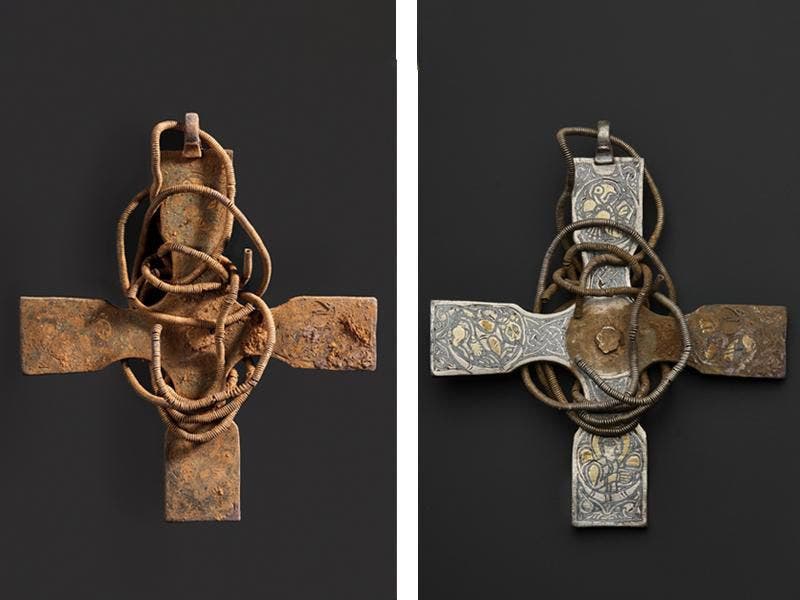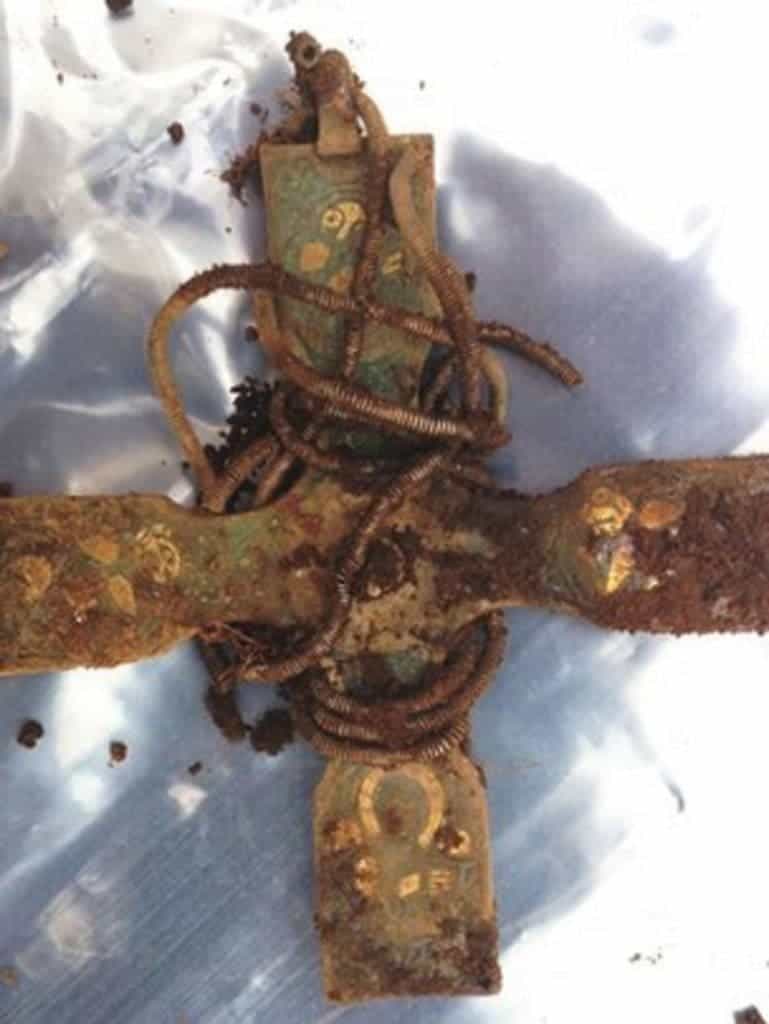
“My senses exploded, I went into shock, endorphins flooded my system and away I went stumbling towards my colleagues waving it in the air,” recalled amateur treasure hunter Derek McLennan upon finding the treasure. He had been given permission to explore the area and was hoping for a nice find, but this surpassed even his wildest expectations. He and two friends had discovered a hoard of more than 100 gold and silver objects — one of the biggest troves of Viking-era artifacts ever found in the United Kingdom. It was called the Galloway Hoard.
It was truly a spectacular find, but after around 1,000 years spent buried, the artifacts weren’t in the best of shape. So when National Museums Scotland acquired the Galloway Hoard, they started work on cleaning and restoring the items.

The cross was cleaned with a porcupine quill — a tool that’s “sharp enough to remove the dirt yet soft enough not to damage the metalwork,” according to a statement from the museum. Cleaning the decorations took a lot of delicate work, but it was worth it, as the gold leaf and alloy decorations revealed a remarkable picture.
Each of the cross’ four arms bears an intricate engraving of one of the four Gospel writers in the Cristian New Testament: Saint Matthew as a human, Saint Mark as a lion, Saint Luke as a calf and Saint John as an eagle.

The silver spiral chain wrapped around the cross is also remarkably intricate. It’s made from wire less than a millimeter in diameter and wrapped around animal gut.
“The pectoral cross, with its subtle decoration of evangelist symbols and foliage, glittering gold and black inlays, and its delicately coiled chain, is an outstanding example of the Anglo-Saxon goldsmith’s art,” says Leslie Webster, former curator of Britain, prehistory and Europe at the British Museum, in the statement.
“Anglo-Saxon crosses of this kind are exceptionally rare, and only one other—much less elaborate—is known from the ninth century,” she continues. “The discovery of this pendant cross, in such a remarkable context, is of major importance for the study of early medieval goldsmiths’ work, and for our understanding of Viking and Anglo-Saxon interactions in this turbulent period.”
Researchers suspect the cross was stolen during a Viking raid.


